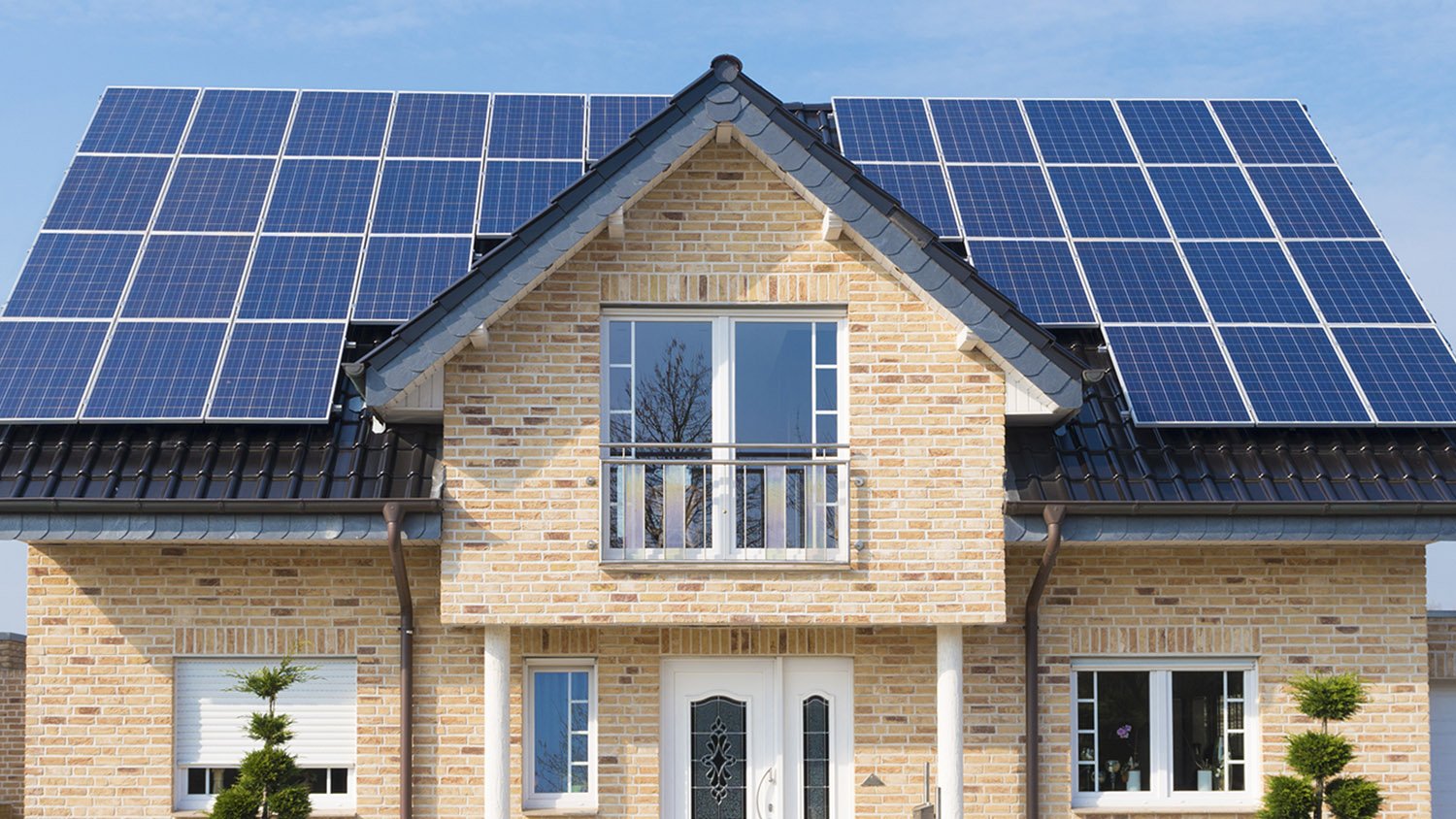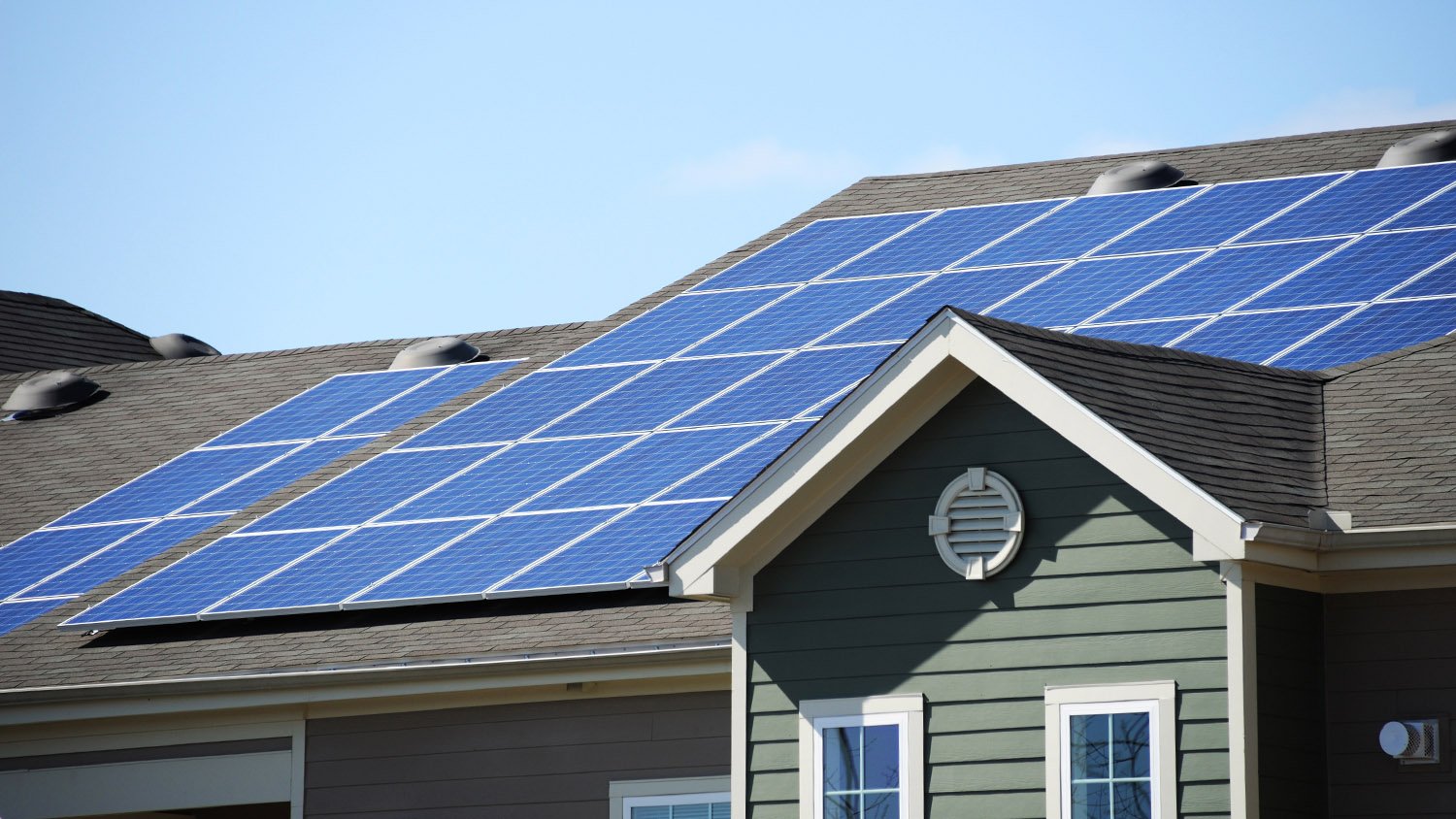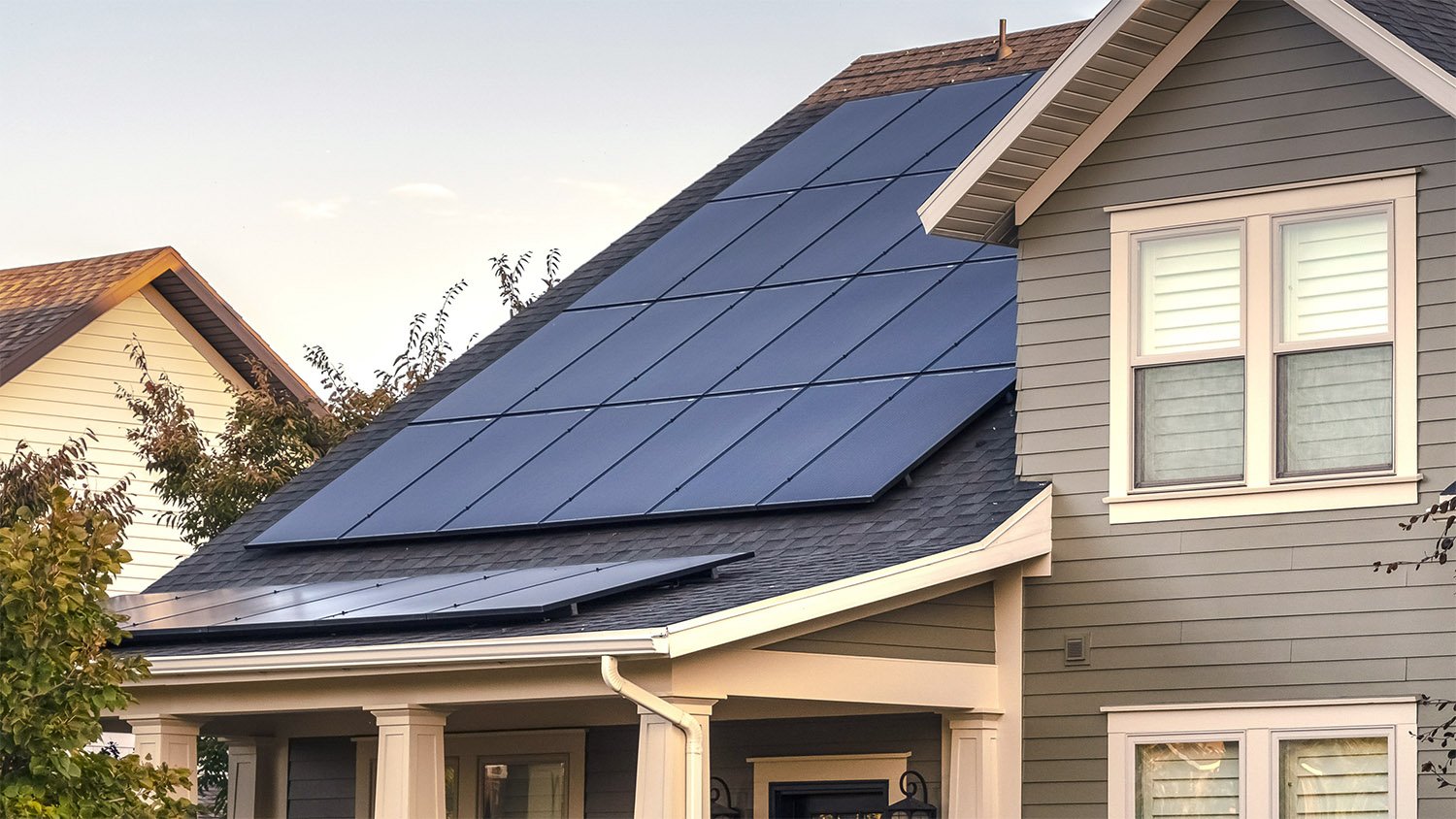3 Types of Solar Panels to Power Your Home
Getting the most out of your solar panels is a power move


If hot, sunny days inspire you to switch to renewable energy for your home, it might be time for you to take the plunge. Before you can admire a shiny, new solar panel system on your roof, you need to choose between the different types of solar panels. Check out the advantages and disadvantages of each type, and get answers to any questions you may have about going solar.
1. Monocrystalline Solar Panels
Monocrystalline panels are the technology that started it all. These panels originated in the 1950s, and they’re still going strong in the solar world.
The solar cells used in monocrystalline solar panels are cut from pure, crystalline silicon in a cylindrical fashion. Each cell looks like a wafer, and a single monocrystalline panel is made up of multiple wafers.
Advantages of Monocrystalline Solar Panels
There are many advantages to using monocrystalline panels in a home solar panel system:
Made from the highest-quality silicon materials.
Have the highest efficiency ratings in the industry, converting 15% to 20% of solar rays into energy.
Yield more power per square foot compared to other types, meaning you need fewer panels for the same amount of energy production.
Perform better in low-light conditions than polycrystalline or thin-film competitors.
Most have a 25-year warranty and last 25 to 50 years.
Disadvantages of Monocrystalline Solar Panels
The disadvantages of this panel type are significant if you’re on a tight budget:
More costly than the other types. The cost to install solar panels made of monocrystalline runs between $6,000 and $9,000 for a standard 6-kilowatt (kW) system.
Since the pure silicon is cut into wafer shapes, the manufacturing process produces significant waste.
Less efficient in hot weather. One study on ResearchGate shows that they perform less efficiently once temperatures are above 95 degrees Fahrenheit, with efficiency waning by around .45% for every two-degree increase in temperature.
Circuits are more likely to break down when the panel is obstructed or shaded.
2. Polycrystalline Solar Panels

Monocrystalline and polycrystalline panels are both manufactured from silicon. However, instead of cutting pure silicon into wafer shapes, manufacturers form polycrystalline panels by melting silicon fragments and pouring the molten silicon into a square-shaped mold.
Advantages of Polycrystalline Solar Panels
Here are the benefits to using polycrystalline panels:
Cost $5,400 to $6,000 for a 6kW system and are less expensive than monocrystalline panels.
Work well at high temperatures ranging from 90 to 122 degrees Fahrenheit, according to a study published in E3S Web of Conferences.
Have a lifespan of 25 years.
Manufacturing process produces less waste than polycrystalline silicon because the silicon is melted instead of cut.
Disadvantages of Polycrystalline Solar Panels
Polycrystalline panels come with a few disadvantages, too:
Have a lower efficiency rating than monocrystalline options, converting 13% to 16% of sunlight into solar energy.
Panels require more space when installed to produce the same electrical output as monocrystalline panels.
3. Thin-Film Solar Panels

Also known as thin-film photovoltaic cells or thin-film PV, the third type of solar panel is made differently than mono- and poly-crystalline panels. Manufacturers construct thin-film solar panels by putting down layers upon layers of photovoltaic materials, such as copper indium gallium selenide (CIGS), cadmium telluride, or amorphous silicon. Because these panels take up significantly more space to generate energy than other kinds, thin-film panels are often used in industrial settings rather than residential ones.
Advantages of Thin-Film Solar Panels
The advantages of thin-film panels are many:
Lightweight, making them cost-friendly to install and move.
Generally not susceptible to problems from shading or obstructions, so low-light conditions don't hinder their performance.
Easy to mass-produce and more affordable than other types of solar panels.
Perform better at high temperatures and absorb more light than crystalline silicon panels, according to this study published by IOP Conference Series. Heat absorption decreases by only 0.2% for every two-degree increase in temperatures above 95 degrees Fahrenheit.
Disadvantages of Thin-Film Solar Panels
On the other hand, thin-film solar panels come with several downsides. In general, thin-film panels:
Score very low in terms of performance, hovering between 7% and 13% efficiency, with an average operating efficiency of about 9 percent.
Require a lot of space. For commercial applications, they often make sense—but for most residential installations where space is tight—they aren’t as suitable.
Take a higher number of panels to generate as much energy as the other types. Because of this caveat, associated costs are higher. You’ll need to purchase more elements, cables, and mounting racks to accommodate the system. A 6kW system with thin-film panels costs between $4,200 and $6,000.
Don't last as long as other options. They can quickly succumb to the effects of weatherization, with a lifespan of 10 to 20 years. So you typically won't find a manufacturer offering a long warranty on them.
Remember, solar panels can be dangerous to install, so regardless of which type you end up choosing, consult a local solar installation pro who can help you safely go solar.

